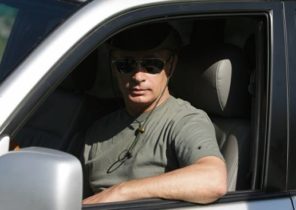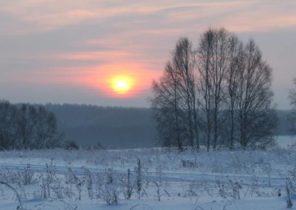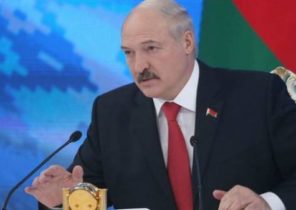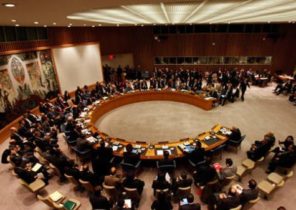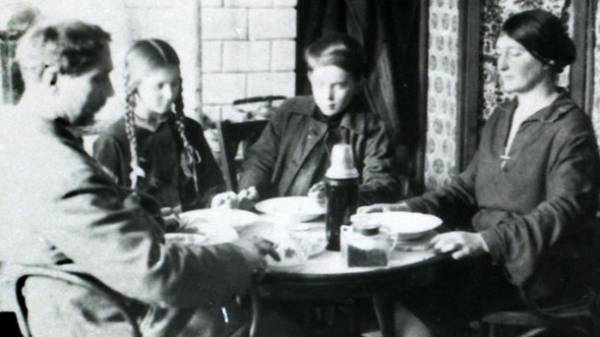
June 22, 1941 Kiev woke up to the explosions of shells. For them, peaceful life is over, and ahead was the defense of the city and 778 terrible days of the occupation. After 76 years, we remember how was the life of the people of Kiev before the war and during the occupation by the Nazis.
From the bombing in the first day of the war in Kiev, 25 people were killed. Among the victims were the workers of the plant “Bolshevik”, one of the bombs fell in the iron foundry… the next day, the factory workers carried on lukyanovskoe cemetery 17 graves. During a moment of silence, to the amazement of the assembled people, the cover of one of the coffins suddenly moved. Work alive! People are in shock and rushed towards the failed dead. He was a foundry worker Ivan makhinya. It turned out that the man severe concussions, and he was killed…
From Kiev Eleanor Zakharovna Koval (Ostapenko) recalls those years in a shaking voice. When the war started, she was 10 and a half years (now 87). “On the first day of war, as if we descended into the abyss. The old life was gone… In Kiev there are those who for various reasons could not go to the evacuation. And we had to adapt to a new life. There was no light, water, stores left products. I had to get used to a curfew. God forbid, where it was to wait until the forbidden hours. For it was just shot in the street,” recalls Eleanor Zakharovna.
She and her mother lived in Kijanowska lane, in the area of the Lvov area. “Under the mountain Kiselevka passed all of our pre-war game. In our company everything, even the two girls owned a slingshot. Then it was running “weapons” from you guys. Slingshot you can buy on the market… We knew how to play dominoes. But the lessons were playing in the sea battle — drowned enemy battleships,” recalls Smith.

Eleanor Smith (Ostapenko). At a young age now. Photos from the family archive
“Remember how a few days were burning downtown. Scraps of burning paper and soot flew to us on Lvivska square. There in the fire killed the people who did not have time to run up and fire houses. The Germans tried to extinguish the building, and the underground cut the hoses with water from the Dnieper river. They had to blow up houses to stop the fire,” says Eleanor Zakharovna.
The Kiev Viktor Kuzmich, karpenyuk (89 years old) remembers as a child he played football on Baikova hill. “We were playing cops and robbers and football. Gathered in the place where now the crematorium at Baikove cemetery. I was fond of collecting birds ‘ eggs. Taken from their nests with a spoon so that the bird abandoned the nest, but not more than one egg… So collected the whole collection, 50 pieces, liquids from the liquid. Before the war, traded it for a real leather soccer ball. And when the war started, it was not until the games needed to survive the bullets and shelling. I tried twice to export to Germany but managed to escape,” — says Viktor Kuzmich.
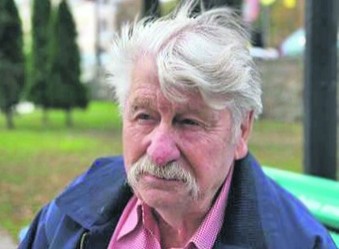
The Kiev Viktor Kuzmich, Karpenyuk. Photo: Alexander Marushchak
The first Germans he saw on Baikova hill. “As told us in school, on the helmets the Germans had horns. The Germans were calm, treated the children with candy. Some neighbors even greeted them with bread and salt on the embroidered towel. Remember how three Germans captured 30 red fighters that operated from the howitzers at Baikove cemetery. Can you imagine?! Three Krauts on a motorcycle, having a detailed map of Kiev with the plan of the cemetery, captured many armed soldiers. Moreover, the German officer broke their rifles on a rock at the entrance to the cemetery. The stone is still there,” recalls Viktor Kuzmich.
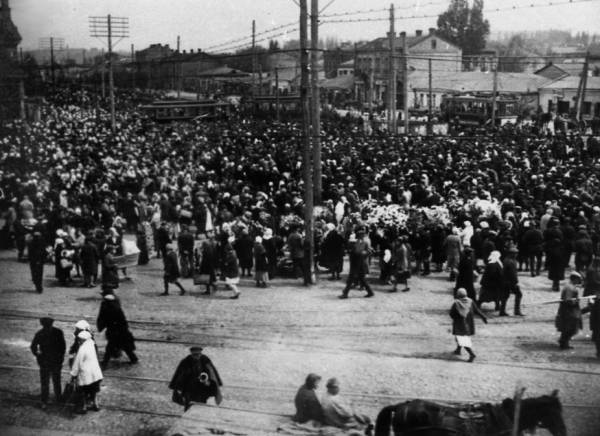
Evbaz. The place where took place the exchange of goods. Photo from the collections of the Museum of history of Kiev

“Hedgehogs” in the streets. From 11 July 1941 defense of Kiev. Photo from the collections of the Museum of history of Kiev
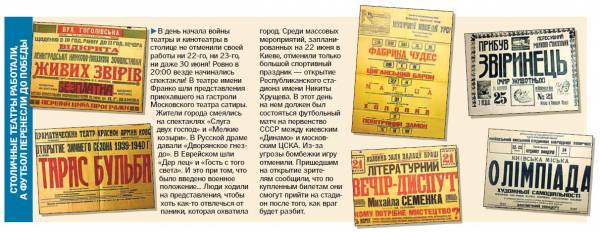
(To view in a larger size click image)
LOOTED SHOPS AND FACTORIES IN ORDER TO SURVIVE
In may 1940, in Kyiv hosted a grandiose military parade on Khreshchatyk — the infantry marched and the tanks rode. People believed that they protect. They were disappointed when the city was preparing for the defense after only three weeks after the war began.
“Before the arrival of the Germans two weeks in Kiev was anarchy. Looted shops. Literally smashed all of the Central Department store on Khreshchatyk. Kiev realized that I needed to stock up on food, many of these reserves have saved lives. I remember how people looted confectionery factory them. Karl Marx. I also went that way. I got a box of halva pounds ten. But I was surrounded by guys and split the box at all. Home was told only a great piece,” recalls Victor Karpenjuk.
Looted and winery. “There toting wine as much as I could. I grabbed the bucket and ran. Bottle took it all apart. Some soldier in the form of a shot from a revolver barrel, and the wine began to flow, and he drank it. Noticing me, the soldier made a couple more shots. And I managed to build wine in a bucket. On the way out I met the neighbor. He says to me that the other barrel “Madera”. So I poured the wine scored “Madeira”, and when ran back, the soldiers were already drunk and sat in a puddle of wine… then Looted and furniture factory Bozhenko. Carrying tables, chairs… I brought home a new chair and a box with the joiner tool. Father I then strongly rebuked, and the wine gave it to the neighbors,” — says Viktor Kuzmich.
During the occupation he was buying cigarettes from soldiers of the Magyars and sold them on the street to passers-by. “The Germans did not sell and did not buy, and we, boys, were sold on Evbase cigarette the piece “Levante” and “Gunia”. After the war, when interned in the repair plant, I saw German prisoners. They repaired vehicles. I often brought them tobacco, which my father did. The Germans smoked only scheduled when the buzzing factory whistle,” recalls Karpenjuk.
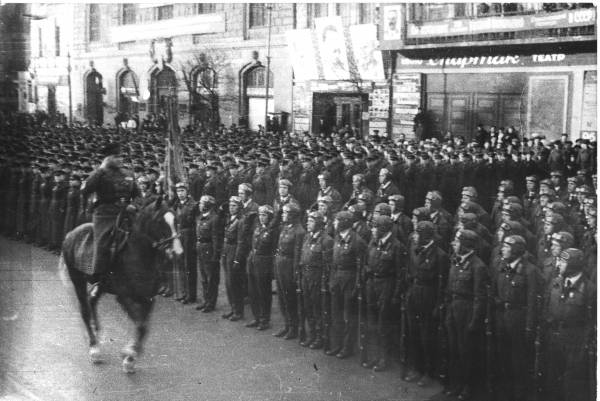
Parade. May 1, 1940 on Khreshchatyk held a grandiose show of force. Photo from the collections of the Museum of history of Kiev
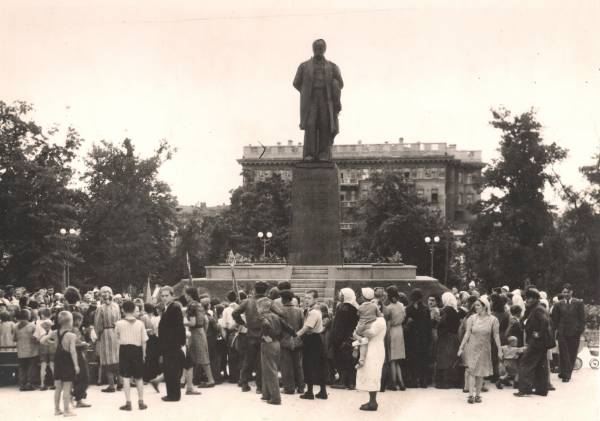
Monument. 1939. The Monument To Taras Shevchenko. Photo from the collections of the Museum of history of Kiev

Deserted. The square of Ivan Franko.Photo from the collections of the Museum of history of Kiev
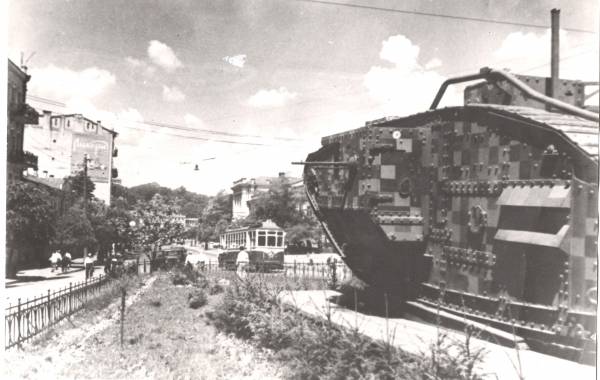
Monument. Tank with the civil war. Photo from the collections of the Museum of history of Kiev
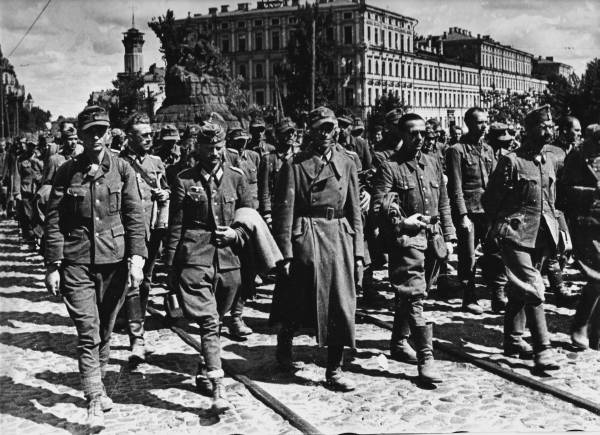
March. German prisoners are on Sofia square by Bogdan.Photo from the collections of the Museum of history of Kiev
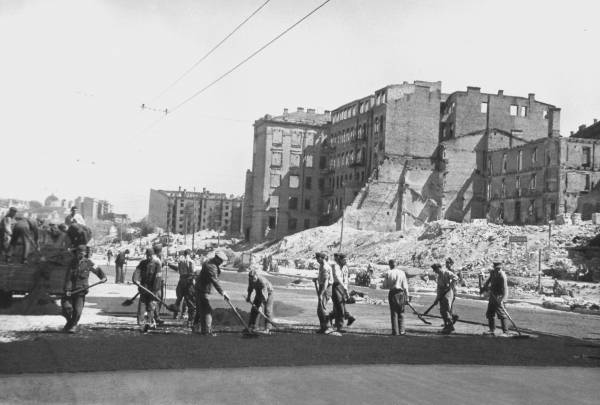
Khreshchatyk. Captive Nazis carefully laid asphalt.Photo from the collections of the Museum of history of Kiev
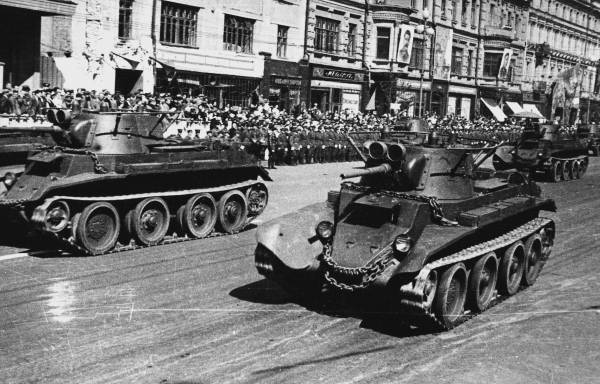
Tanks. Soviet tanks driving on Khreshchatyk on parade in 1940. Photo from the collections of the Museum of history of Kiev
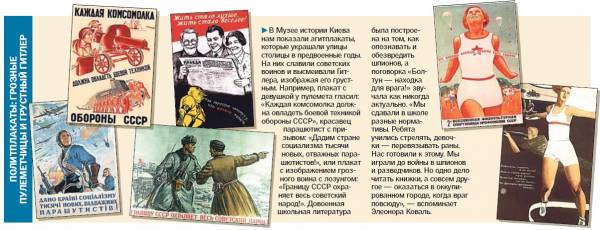
(To view in a larger size click image)
CLOTHES AND EVERYDAY LIFE OF THE OCCUPATION
“I quickly grew out of their dresses, and I alter clothes of their old outfits. Haymarket and EMBASE farmers traded food and products for sofas, table lamps, clothes and shoes. On return, we went to the village. Remember how I exchanged my dress for food, and returned to Kyiv in an old bag… Food cooked on kerosene stoves. We had stove heating and we went to the forest to look for firewood. Food was cooking on the stove. I went to fetch firewood on foot in Pushcha-Voditsa, trams did not go. All was carried on the shoulders,” recalls Eleanor Kowal.
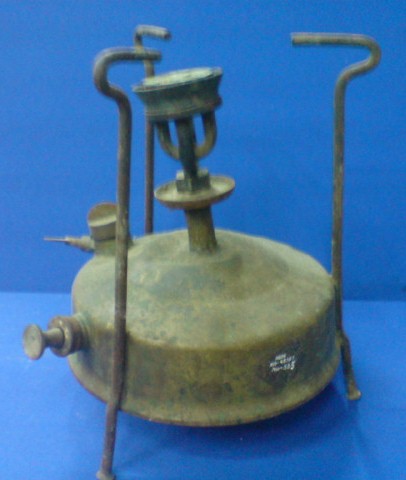
Food cooked on kerosene stoves. Photo from the collections of the Museum of history of Kiev
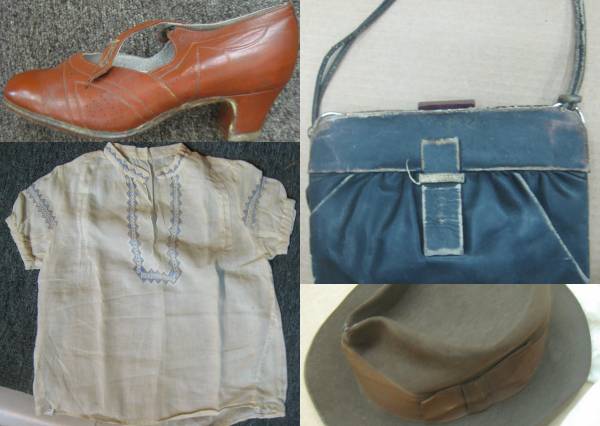
Clothes Kiev wartime. Photo from the collections of the Museum of history of Kiev

